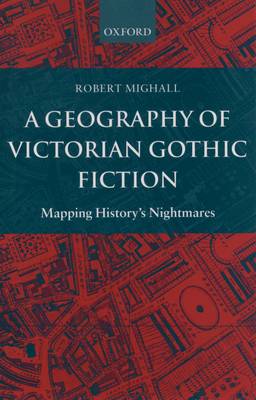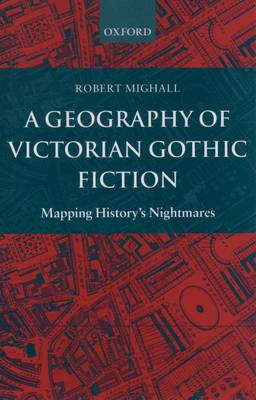
- Afhalen na 1 uur in een winkel met voorraad
- Gratis thuislevering in België vanaf € 30
- Ruim aanbod met 7 miljoen producten
- Afhalen na 1 uur in een winkel met voorraad
- Gratis thuislevering in België vanaf € 30
- Ruim aanbod met 7 miljoen producten
A Geography of Victorian Gothic Fiction
Mapping History's Nightmares
Robert Mighall
Paperback | Engels
€ 169,45
+ 338 punten
Omschrijving
This is the first major full-length study of Victorian Gothic fiction. Combining original readings of familiar texts with a rich store of historical sources, A Geography of Victorian Gothic Fiction is an historicist survey of nineteenth-century Gothic writing--from Dickens to Stoker, Wilkie Collins to Conan Doyle, through European travelogues, sexological textbooks, ecclesiastic histories and pamphlets on the perils of self-abuse. Critics have thus far tended to concentrate on specific angles of Gothic writing (gender or race), or the belief that the Gothic 'returned' at the so-called fin de siècle. Robert Mighall, by contrast, demonstrates how the Gothic mode was active throughout the Victorian period, and provides historical explanations for its development from late eighteenth century, through the 'Urban Gothic' fictions of the mid-Victorian period, the 'Suburban Gothic' of the Sensation vogue, through to the somatic horrors of Stevenson, Machen, Stoker, and Doyle at the century's close. Mighall challenges the psychological approach to Gothic fiction which currently prevails, demonstrating the importance of geographical, historical, and discursive factors that have been largely neglected by critics, and employing a variety of original sources to demonstrate the contexts of Gothic fiction and explain its development in the Victorian period.
Specificaties
Betrokkenen
- Auteur(s):
- Uitgeverij:
Inhoud
- Aantal bladzijden:
- 340
- Taal:
- Engels
Eigenschappen
- Productcode (EAN):
- 9780199262182
- Verschijningsdatum:
- 29/05/2003
- Uitvoering:
- Paperback
- Formaat:
- Trade paperback (VS)
- Afmetingen:
- 141 mm x 217 mm
- Gewicht:
- 408 g

Alleen bij Standaard Boekhandel
+ 338 punten op je klantenkaart van Standaard Boekhandel
Beoordelingen
We publiceren alleen reviews die voldoen aan de voorwaarden voor reviews. Bekijk onze voorwaarden voor reviews.










